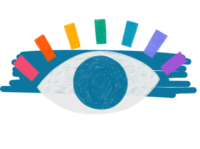The world of pediatric ophthalmology is filled with unique challenges and rewarding moments. One such challenge is the presence of cataracts in children, a condition that affects the eye’s natural lens and can impact a child’s vision from an early age. In this blog post, we will delve into the world of child cataracts, exploring their causes, symptoms, diagnosis, and treatment options.
What Are Child Cataracts?
Cataracts in children, often referred to as pediatric cataracts, are cloudiness or opacity that develops in the eye’s natural lens. Unlike cataracts in adults, which typically result from aging, pediatric cataracts occur for various reasons and can affect infants, toddlers, or older children.
Causes of Child Cataracts:
- Congenital Cataracts: These are cataracts present at birth, and they may develop due to genetic factors, infections during pregnancy, or metabolic disorders.
- Developmental Cataracts: These cataracts may develop during early childhood and can be associated with certain medical conditions, trauma, or exposure to toxic substances.
- Traumatic Cataracts: In some cases, an injury or trauma to the eye can result in cataract formation in children.
Common Symptoms:
Child cataracts can manifest differently depending on the age of the child and the severity of the condition. Some common signs and symptoms include:
- Cloudy or blurred vision: Children may not be able to describe their vision problems, but they may show signs of difficulty seeing distant objects or details up close.
- Nystagmus: Involuntary, rapid eye movements.
- Strabismus: Misalignment of the eyes.
- Sensitivity to light: Children with cataracts may be more sensitive to light (photophobia).
- White or grayish pupil: Instead of a normal black pupil in each eye, you may notice a white or grayish color.
Diagnosis:
Diagnosing child cataracts typically involves a thorough eye examination conducted by a pediatric ophthalmologist. This examination may include:
- Visual acuity tests.
- Slit-lamp examination to visualize the lens.
- Ultrasound or other imaging tests to assess the extent of cataract formation.
Treatment Options:
The treatment approach for child cataracts depends on several factors, including the child’s age, the extent of cataract development, and any associated conditions. Common treatment options include:
- Surgery: Pediatric cataracts are often treated with surgery to remove the cloudy lens and replace it with an artificial intraocular lens (IOL). Surgery is typically performed under anesthesia.
- Eye Patching or Glasses: Following surgery, some children may require eye patching or glasses to help with vision development.
- Follow-up Care: Regular follow-up appointments with a pediatric ophthalmologist are crucial to monitor a child’s visual development and make any necessary adjustments to treatment.
Conclusion:
Child cataracts can be a challenging condition, but with early diagnosis and appropriate treatment, most children can achieve good visual outcomes and enjoy a lifetime of clear vision. If you suspect your child may have cataracts or if you have any concerns about their eye health, consult a pediatric ophthalmologist who specializes in treating pediatric eye conditions. Early intervention is key to ensuring the best possible visual outcomes for your child.
